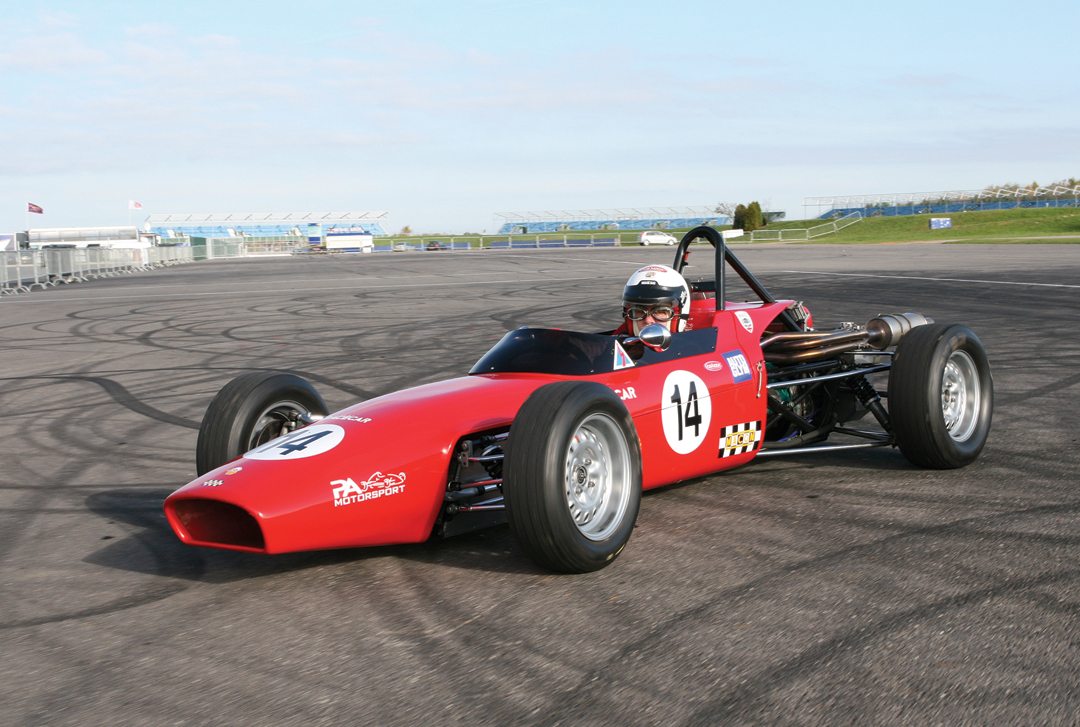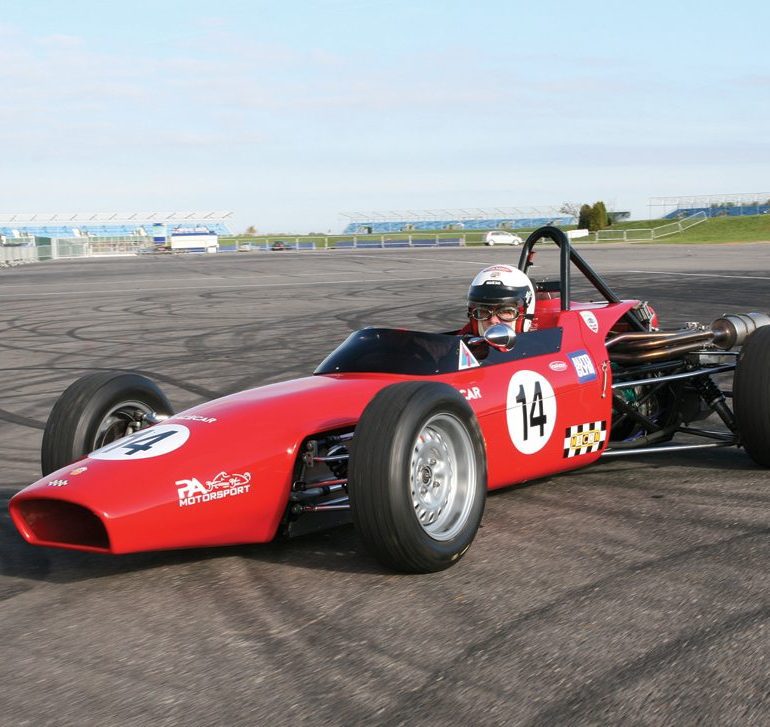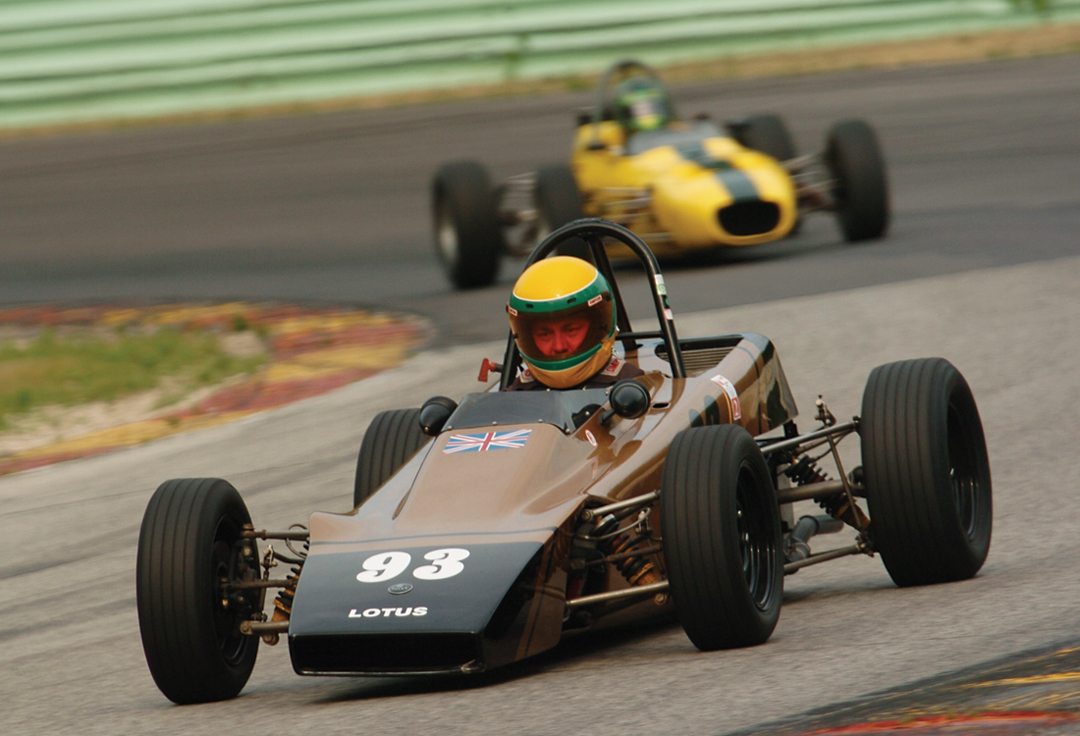Formula Ford was a specification racing series created on the idea that the best drivers would win if all were racing identical cars. The idea for this low budget Formula was created by an Englishman named Geoffrey Clarke, who had a driver’s school called Motor Racing Stables based at the Brands Hatch Circuit. Clarke received support from Ford’s competition manager, Henry Taylor, and Ford’s director of public affairs, Walter Hayes. Ford supplied their 1600-cc Cortina GT engine, as well as their backing and name. Lotus Components built a car based on the Lotus 31 Formula 3 car calling it the Lotus 51 Formula Ford. Ironically, these early cars had a Renault gearbox. They sold for the affordable price of just under £1,000, making racing in this series very affordable since a Formula 3 car of the day cost over £3,000. The Royal Automobile Club, Britain’s governing body, established a set of racing regulations. The first official race was held at Brands Hatch on July 2, 1967. From 1967 to the present, the Formula Ford Series has produced some very exciting racing in many different makes of racing cars, as well as some great drivers and future champions, such as Andretti, Fittipaldi, Schenken, Scheckter and Senna. Today historic Formula Ford is an entry-level racing category and for the purposes of this guide, covers cars from 1967 to 1972. Keep in mind the greatest single factor in determining the value of a Formula Ford is the quality and cost of its preparation.
| Make | Model | Level III | Level II | Level I |
| Alexis | 15 | $8,000 | $12,000 | $18,000 |
| 18, 22 | $6,000 | $10,000 | $15,000 | |
| Bobsy | $5,000 | $10,000 | $15,000 | |
| Caldwell | D9, D9B | $8,000 | $12,000 | $18,000 |
| Crossle | 16F | $8,000 | $12,000 | $17,000 |
| 20F | $8,000 | $12,000 | $28,000 | |
| Dulon | LD4, 4B, 4C | $7,000 | $10,000 | $16,000 |
| LD9 | $8,000 | $12,000 | $18,000 | |
| Elden | PH8 | $10,000 | $12,000 | $16,000 |
| PH10 | $10,000 | $14,000 | $28,000 | |
| Ginetta | G-18 | $8,000 | $12,000 | $16,000 |
| Hawke | DL2, 2A, 2B | $10,000 | $14,000 | $19,000 |
| DL9, 9A | $12,000 | $15,000 | $21,000 | |
| LeGrand | Mk 10 | $5,000 | $10,000 | $15,000 |
| Lola | T200 | $10,000 | $14,000 | $18,000 |
| T202 | $10,000 | $16,000 | $20,000 | |
| T204 | $10,000 | $18,000 | $20,000 | |
| Lotus | 51 A,B,C | $12,000 | $20,000 | $25,000 |
| 61M, MX | $10,000 | $15,000 | $18,000 | |
| 69 | $25,000 | $30,000 | $35,000 | |
| Macon | MR 7B | $5,000 | $10,000 | $14,000 |
| MR8, 8B | $5,000 | $10,000 | $14,000 | |
| March | 709, 719, 729 | $10,000 | $14,000 | $18,000 |
| Merlyn | MK11, 11A | $15,000 | $20,000 | $25,000 |
| MK17, 17A | $10,000 | $15,000 | $20,000 | |
| MK20, 20A | $12,000 | $18,000 | $24,000 | |
| Royale | RP2 | $6,000 | $10,000 | $16,000 |
| RP3, 3A | $8,000 | $12,000 | $18,000 | |
| Tecno | FF | $10,000 | $15,000 | $20,000 |
| Titan | MK 6,6A,6B,6C | $15,000 | $20,000 | $25,000 |
| Winkelman | WDF1,2,3,4 | $10,000 | $15,000 | $20,000 |
1969 LOTUS 61
Colin Chapman was famous for building successful single-seater racing cars. By 1969, Lotus had won in Formula One multiple times. In fact, the very first purpose- built Formula Ford for the new series was the 1967 Lotus 51. The Lotus 61 was an evolution of the 51 with a wedge-shaped body and a Hewland gearbox, replacing the old Renault box. These cars were used by the Jim Russell Driving School. They were also very successful in competition, winning championships in England, Europe, and the United States. The Chapman design, which originated in 1967, was good enough to last through 1970.
1971 MACON MR8B

Criteria Used For Assessing Valuations for this Guide:
- Degree of Originality
- Overall Condition, Restoration
- Technology, Design, Coachbuilder
- Production Numbers/Rarity
- Competition History
- Ownership History, Documentation
- Modern Event Eligibility
Regional Variances
The prices stated in this guide are based on U.S. values. The values of historic racing cars can vary as much as 25%-35% in other countries, depending on local market appeal, currency rates, import duties, and VAT. Most of the time, we are able to document known sales or closed escrows, as they say in real estate. When this is not possible, a logical estimate of the car’s value is given, based on its sales history and relationship to cars of its type.
The prices stated in this guide are based on U.S. values. The values of historic racing cars can vary as much as 25%-35% in other countries, depending on local market appeal, currency rates, import duties, and VAT.
LEVEL |
VALUATION CATEGORIES |
|---|---|
I |
The best combination of all criteria. |
II |
Satisfies mid-range of criteria. |
III |
In need of restoration. Meets only a few points of criteria |





